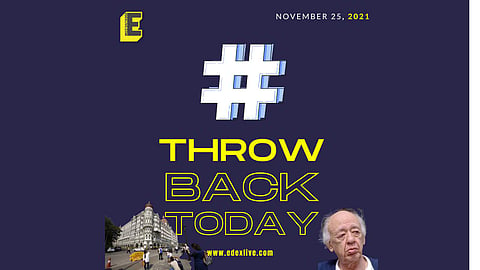

Out of nowhere, ten men in inflatable speedboats docked ashore near a fisherman's colony in Colaba, Mumbai. The local news report states that when the local fishermen made inquiries, they were promptly told to mind their business by these men. The fishermen even reported the incident to a police post nearby, but in about an hour, the carnage had begun.
When the Taj Mahal Palace in Mumbai burned on November 26, 2008, infamously known as 26/11, a hole was burnt right through the hearts of all Indians. It wasn't just the Taj that was attacked by the ten men belonging to Islamist jihadist outfit Lashkar-e-Taiba, this orchestrated terrorist attack targetted Chhatrapati Shivaji Terminus, Leopold Cafe and other spots of Mumbai. About 175 citizens lost their lives and 300 were wounded within 68 hours and the city itself was scarred forever.
What Carroll gave for Christmas
Going from one absurdity to another and also because the Christmas countdown has begun, here's another one. Ten-year-old Alice Liddell received a manuscript titled Alice's Adventures Under Ground on November 26, 1864 which had a note that read “A Christmas Gift to a Dear Child in Memory of a Summer's Day”. Today, this book is known as Alice in Wonderland!
The book's author Lewis Carroll loved to play with numbers, which led to him becoming a Math tutor at Christ Church, Oxford, and words, which we know led him to become one of the most beloved writers. But his stutter induced a shyness in him which was dispelled only in the company of little children. When he narrated the story he is most famous for today to Alice and her cousins, it was these little friends of his who implored him to write and ta da, that's how Reverend Charles Dodgson became Lewis Carroll. All thanks to that one fine Christmas day.
READ ALSO : What happened on November 21: How CV Raman was so confident of getting a Nobel and why we need to say hello!
How absurd is that!
Repetition of mundane activities, inconsequential conversations, oddball characters and many more elements combine to give us Theatre of the Absurd, a powerful form of plays that explores ideas of existentialism in a way that makes the audience go, 'Well, that's absurd!' In a world that was battered by World War II, disillusionment was rife and this was the world Romanian-French playwright Eugène Ionesco was living in, it was a different world from the one he was born in on November 26, 1909. He defined absurd as "that which is devoid of purpose" and is today, known as the Godfather of Theatre of the Absurd.
The frontrunner of the French avant-garde theatre, Eugène Ionesco's plays, or "anti play" as they were called, hit all the right and absurd notes themselves. Whether it's the general populace, one by one, morphing into rhinos in the play Rhinoceros or the meaningless-turned-
